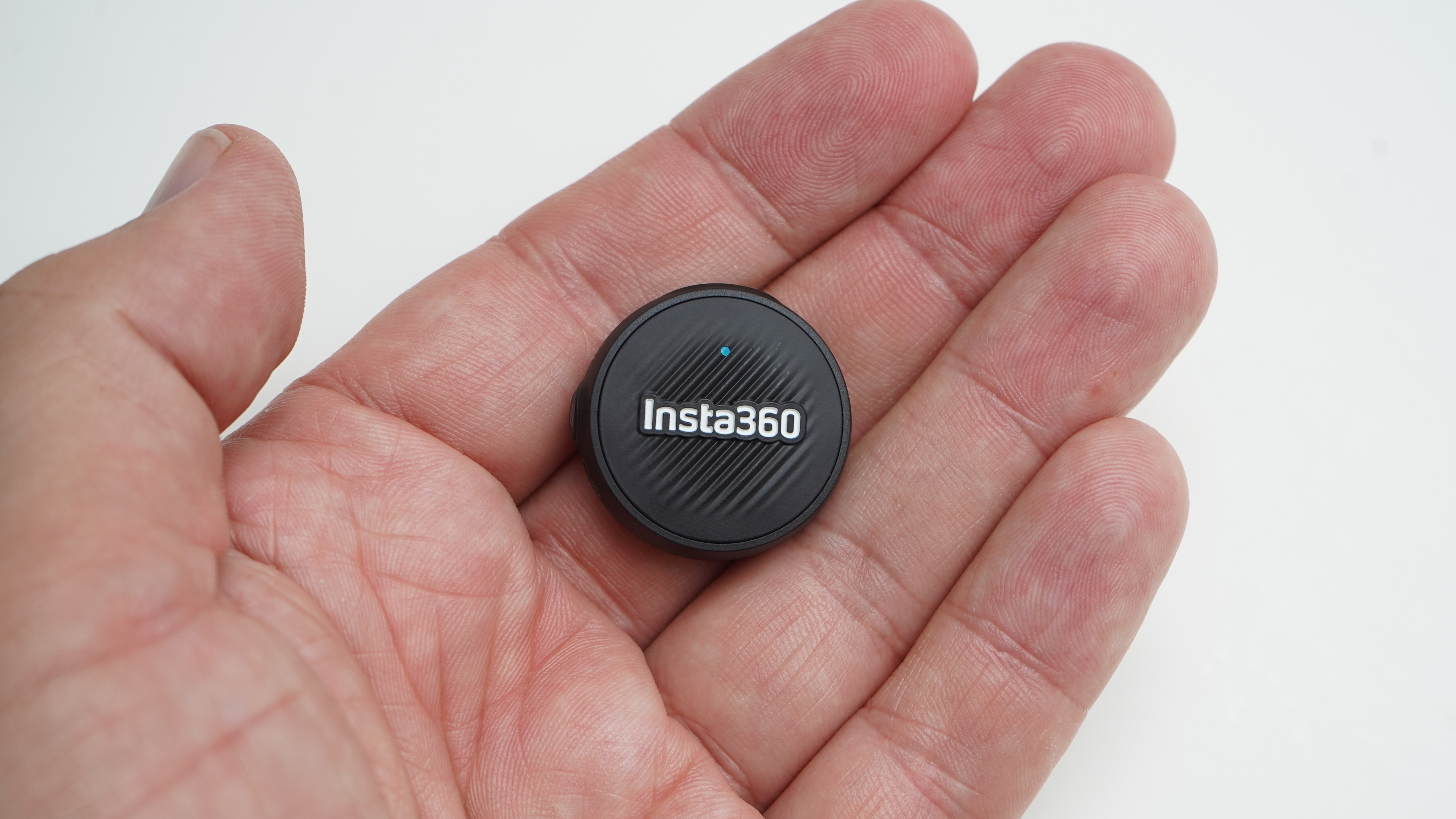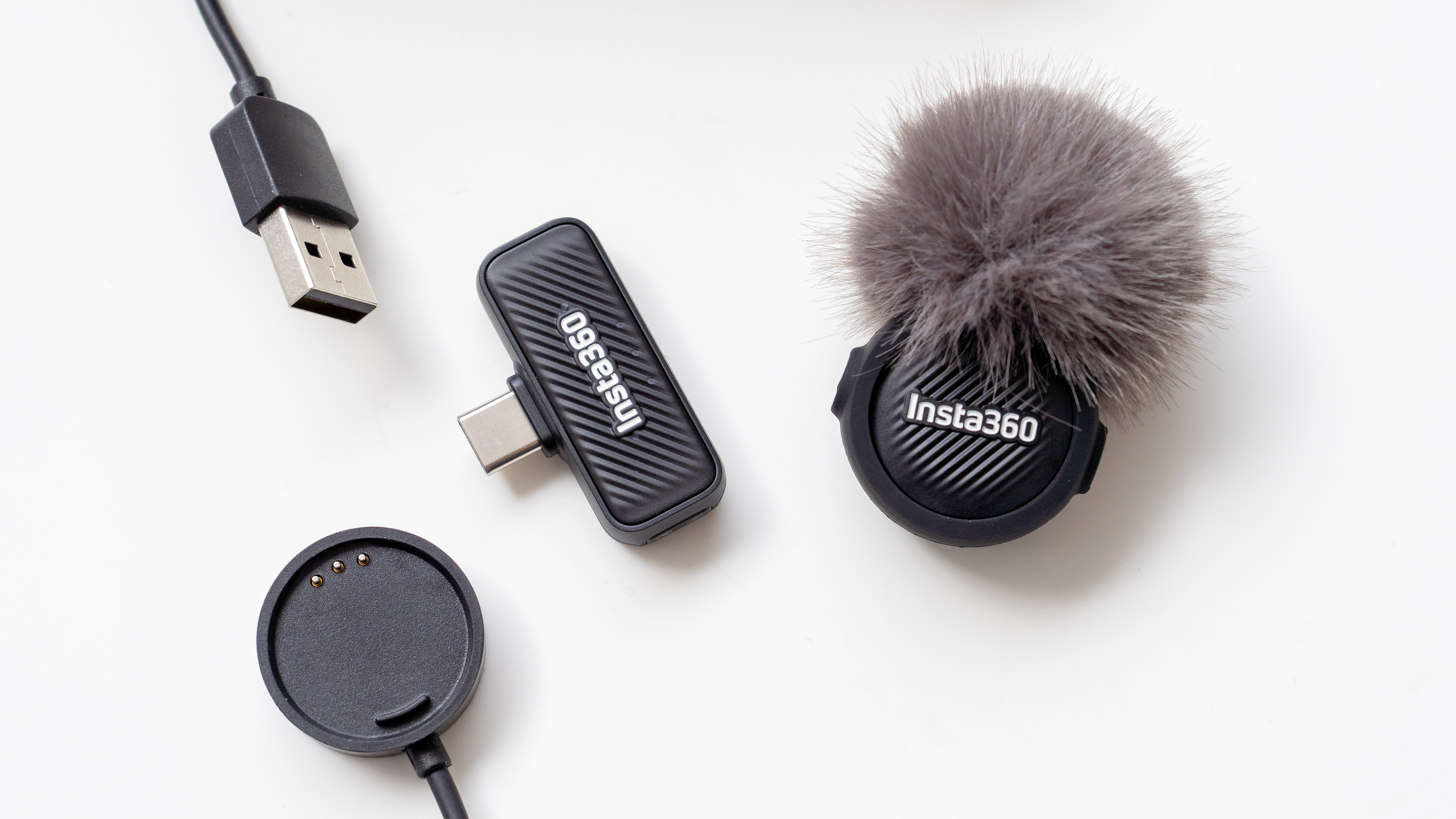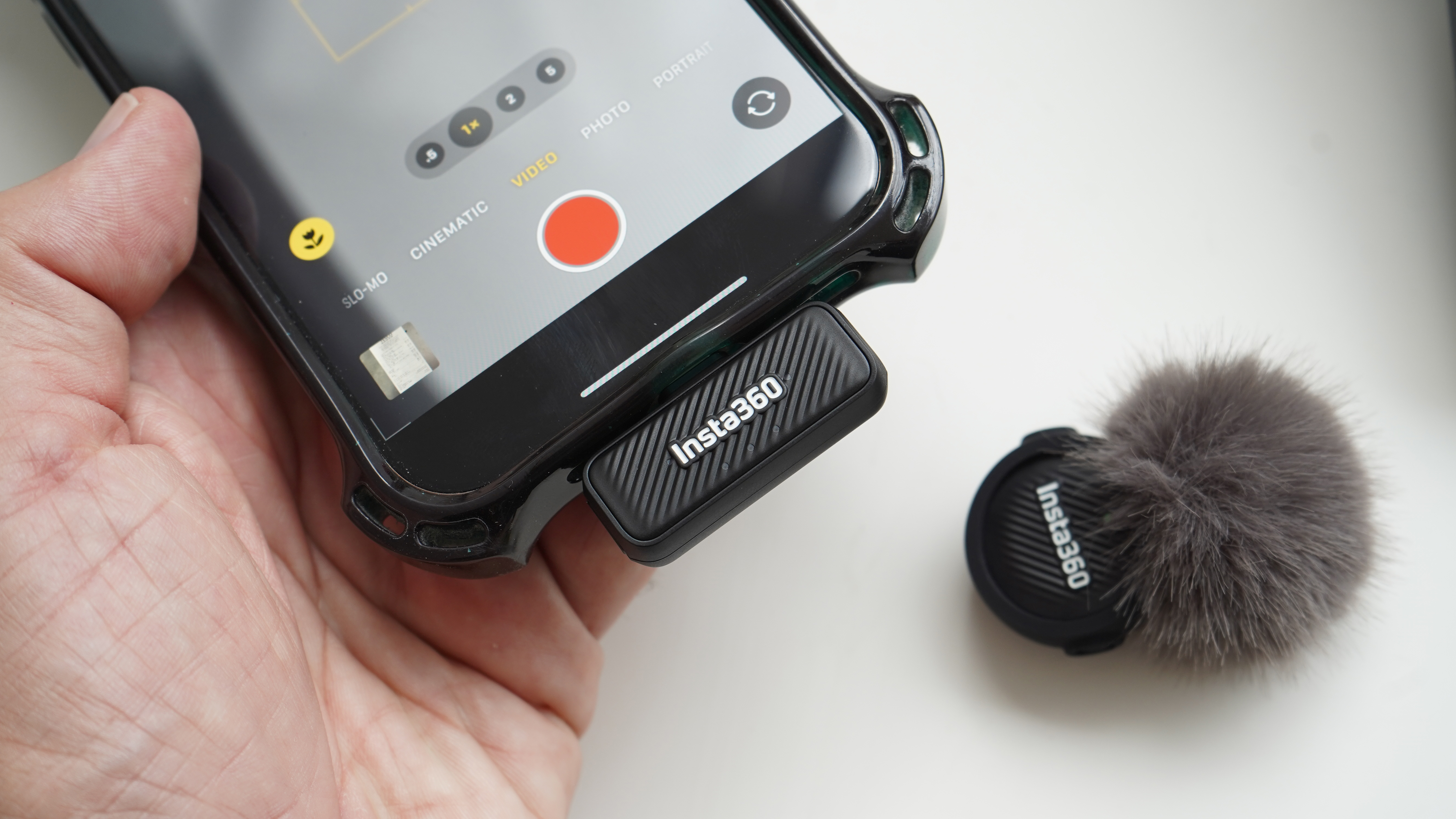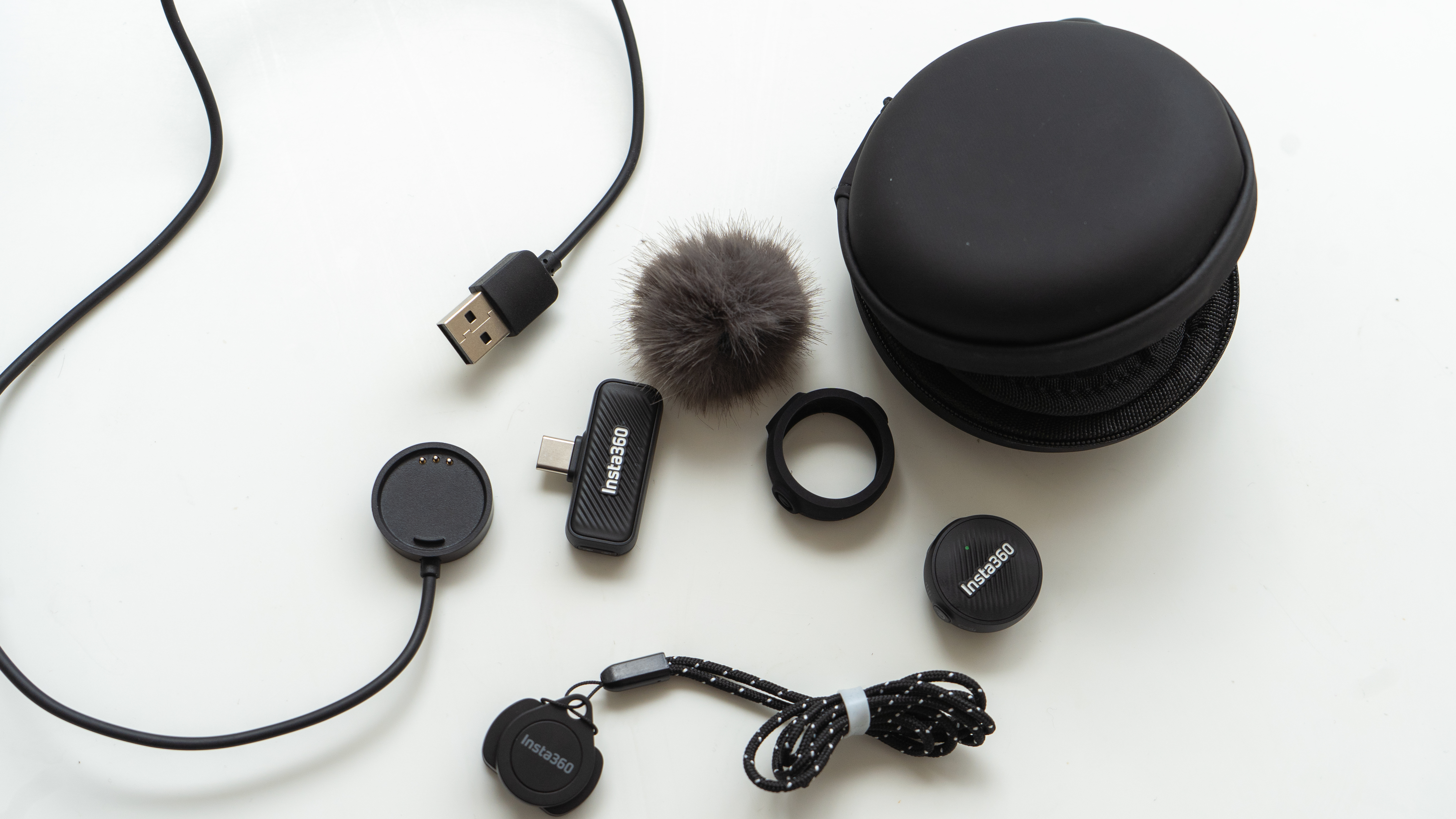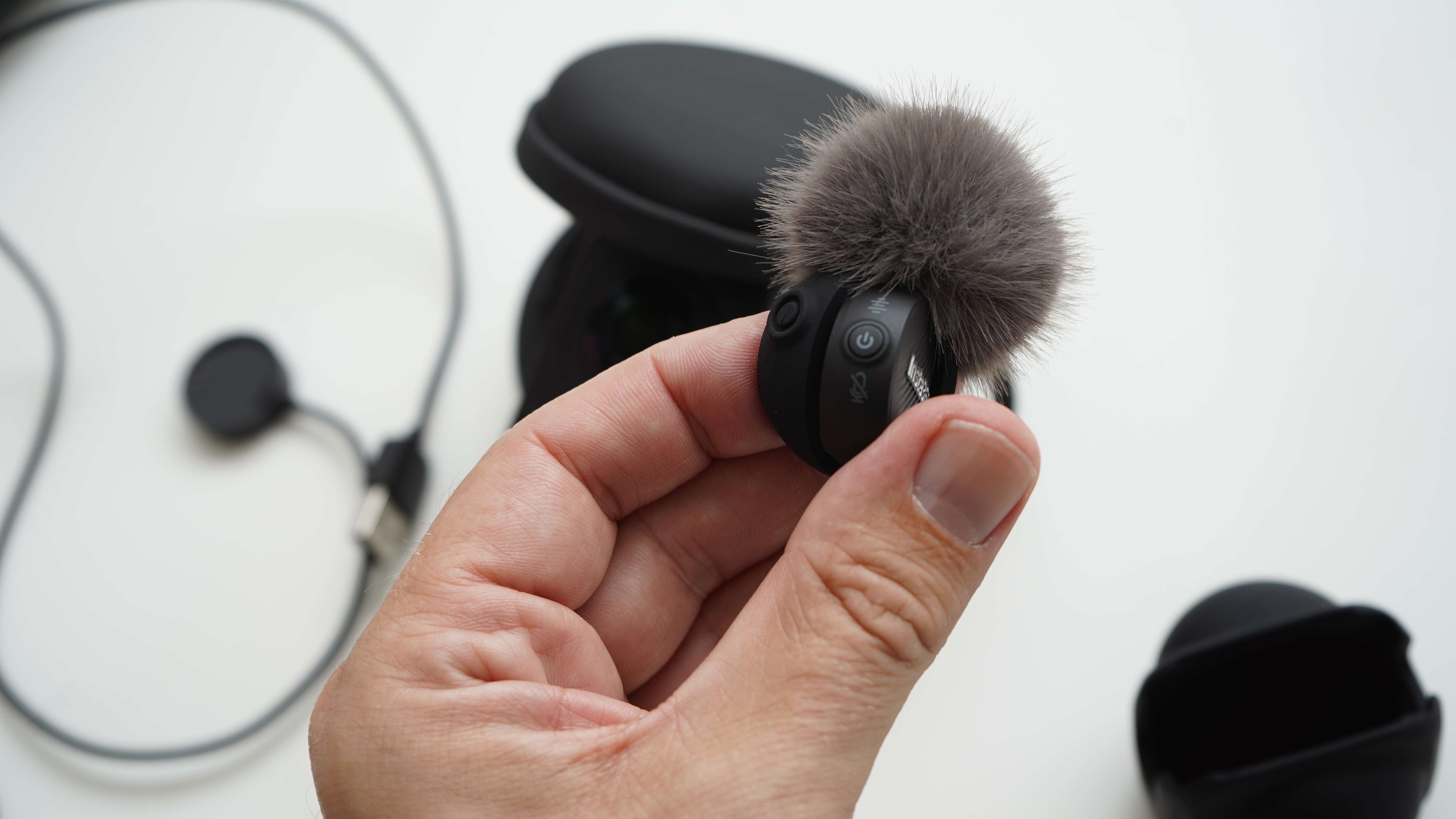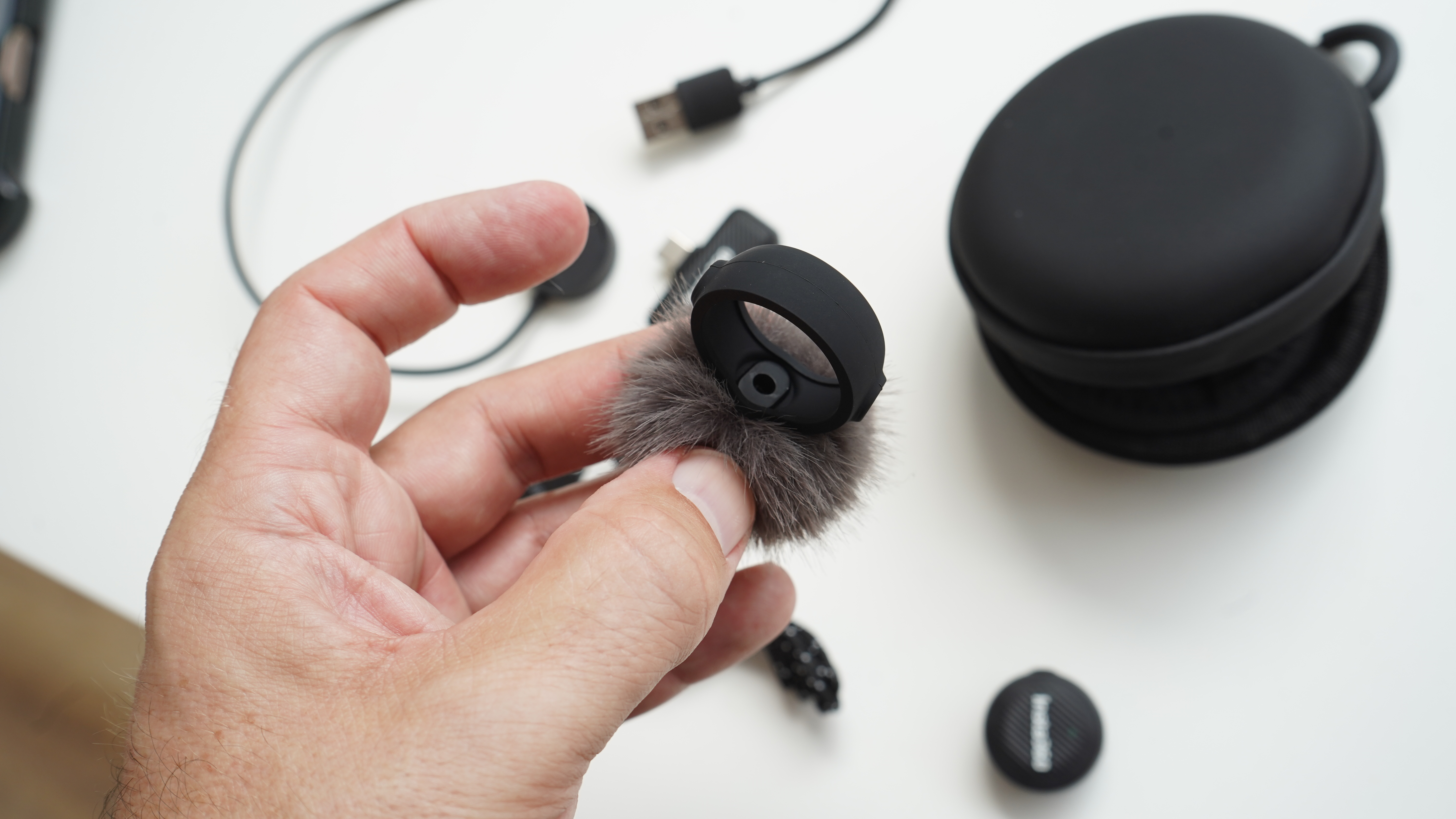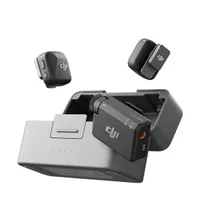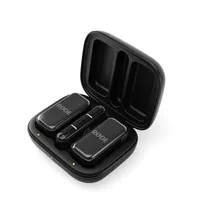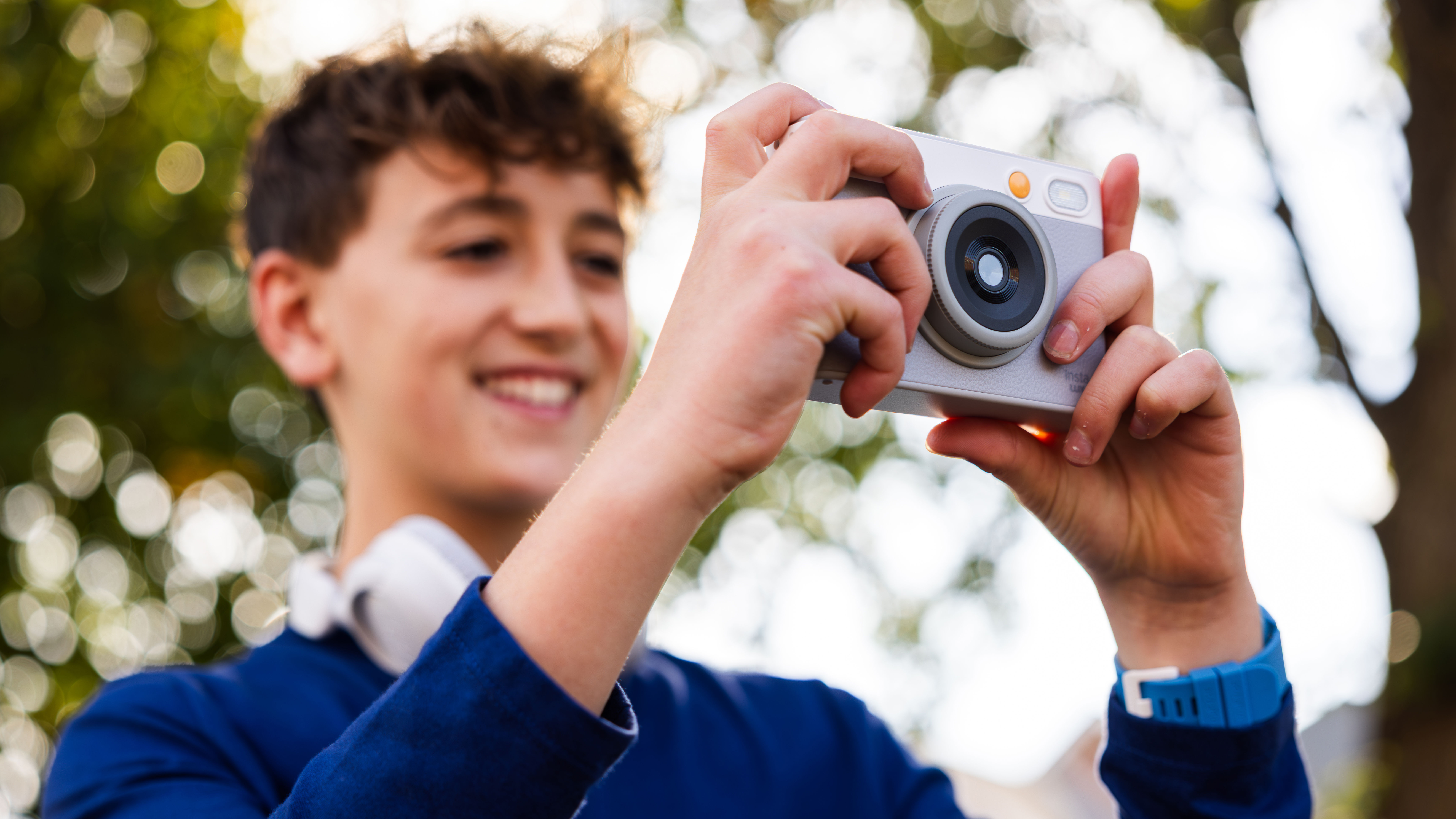Digital Camera World Verdict
Sensibly priced and designed for a compact size, this is a very useful high high-quality wireless mic which works brilliantly with Insta360's flagship cameras, and easily connects to phones via USB-C, but doesn't have quite as much flexibility for video creators hoping to use it with other connectors – Lightning and 3.5mm are missing!
Pros
- +
Small, discrete & light design
- +
Good sound
- +
Easy to wear/mount
Cons
- -
USB-A charger
- -
No 2x TX (2 Mic) bundle
- -
Limited connector options
Why you can trust Digital Camera World
Were I a cynic, I might suggest that the timing of the arrival of an Insta360-branded mic from a company which had previously been content to list compatibility with the DJI Mic 2 as a feature might corroborate some rumors that DJI was planning on releasing their own 360-degree camera.
Motivations aside, this is a 24-bit wireless microphone which is designed to pair with Insta360's flagship X5 360-degree camera and Ace Pro 2 action camera, and can also work with a phone over USB-C (but not Lightning – sorry older iPhones), nor any other connection types. In other words, it does the main jobs most people need, but it's not as flexible as certain other mics. Then again, it probably doesn't need to be.
Is this going after Rode, Hollyland and others, or even the DJI Mics? Perhaps – if you can connect to a USB-C socket on your phone and get the RX kit, but it could be that Insta360 are happy just helping Insta360 customers. Either way, is this up to the job?
Specs
Dimensions: | 27 x 27 x 11.6mm / 1.3 x 1.3 x 0.6 inches (Mic) |
Weight: | 8g / 3.7oz (Mic) |
Range: | Up to 300m / 900ft |
Battery: | Up to 10hours |
Bluetooth | Yes |
Price
The Insta360 Mic Air is available in two bundles:
The Mic Air Transmitter (TX) is for people with an Insta360 camera compatible with the Mic Air – that is an Ace Pro 2 or an X5 camera. You get the Mic (TX), a charging base, button magnet, magnet pendant, windshield, and carry case. Launch price is $49.99 / £49.99 / AU$89.99.
The 1 TX + 1 RX bundle adds in a USB-C receiver (RX) which means you can use the device directly with smartphones, computers, or tablets. It launches at a very fair $69.99 / £69.99 / AU$129.99.
These both compare well with the more expensive DJI Mic Mini (1TX + 1RX).
The best camera deals, reviews, product advice, and unmissable photography news, direct to your inbox!
Mic Air: Build & handling
The TX needs to sit on a tiny cradle to charge, but several magnetic means to wear it are provided once you're ready to get going – either a simple magnet for the other side of a garment, which will usually be the most discrete, or a pendant magnet which offers a bit more flexibility with bulkier clothing.
The mic itself is at the top of the TX, so if you wear the mic with the Insta360 logo facing the right way up the mic will point up. This leads to the somewhat unconventional means of attaching the wind shield (or "dead kitten"). The shield has a small hole at its base to go over the mic, which is held in place through a moulded rubber ring that clips around the TX.
That rubber ring is a bit of an annoyance at first, because it needs to be aligned with the button on the side, though it comes easily enough. More annoying is if the ring and windshield should become detached, as the plastic moulding that grips the ring is really quite small and the rubber is flexible. Re-fitting, as I had to, it with bits of the hairs dangling around was a little irksome, I found the first time.
Some – myself included – may find it a little odd that the charging cradle has a USB-A plug in this day and age, though it has to be said that I certainly have a few devices that still offer that means of charging so it didn't hold me back.
I tested the 1 TX + 1 RX set, which came with a circular zipped case, dividing the main parts from an accessory pocket. I did find the weather shielded zip a little sticky to open a couple of times. Not too much of a problem, though not as elegant as DJI's sprung hinge case, I thought. That said, it's softer, so easier to just toss into a bag, and stores more accessories, so perhaps I'm being unfair. This may be more practical but didn't quite earn my instinctive geeky "like" in the same way.
Performance
No complaints about the performance. If you're looking for a little more detail than that, then I found that the mic handled the sound range well, and was able to get a clear recording of my vocal range indoors and out, even without the windshield when I was outside on a breezy day.
I tested the mic with my iPhone and an Insta360 X5 and didn't have much trouble connecting them. There is a single button, but it does all the jobs I needed, and there aren't that many jobs. It took a few seconds to pair with the RX again after pairing with the X5, but it was clear when this had happened, even outdoors, from the bright LEDs.
I not only tested the mic in the breeze, but near a noisy road, with passing diesel engines, perhaps because I'm cruel. It nevertheless handled the noise reduction well, some of the passing buses reduced to nothing, some to a slight noise. All in all I was impressed.
Overall Verdict
Not the most fully featured wireless mic I've ever tested, and one in which some aspects of the design are perhaps a little less than perfectly polished, but nevertheless one which is also very sensibly priced and certainly offers the quality you'd hope for – not to mention software integration with key Insta360 products.
My main complaint is also, let's be totally honest, likely one that starts to blend away into nothing over time, even a week or two like my test. Slightly unusual or quirky design elements are things we all get used to with devices we use day to day, while the lightness is impressive and the sound quality is not to be sniffed at.
Overall, though, for vlogging or capturing local sound on the go, this mic did a good job of cutting out the background noise, even in challenging environments, and is very small and light to wear, so by the key criteria (as well as the price) it's a good choice if it'll connect to the devices you have.
Features ★★★½☆ | If this mic has you covered, then by including noise cancellation (not to mention compatibility with some devices with no separate RX) it's got the core feature. On the other hand, it's more limited than some. |
Design ★★★☆☆ | I really like the compact light TX, but the surprisingly fiddly nature of the windshield irked me, as does doing everything on one button. The zipped case was also only OK. |
Performance ★★★★☆ | Sound quality is good, and despite irritations the wind shield and noise cancellation system combine together well even in gusty conditions. |
Value ★★★★★ | Assuming this meets your needs in terms of connectivity, then price and performance are hard to dispute. |
Also consider
DJI Mic Mini
The DJI Mic Mini offers a similar proposition, but sits a little higher up the feature chain because a stereo pair option is available, and the RX unit supports 3.5mm input so it can also connect to a lot of cameras. It is also in cheaper bundles (though not as cheap as the Mic Air) because, just as this can pair with certain Insta360 products, the DJI's Mic Mini can befriend some of that company's devices without a separate RX.
RØDE Wireless Micro
Built for smartphones, this ‘plug and play’ kit from RØDE is compact even though it is a stereo pair. It works straight away with your iPhone, just like the Mic Air, though the receiver’s USB-C plug is very short – you won't get away with a case as think as the one in this test!
How I tested it?
I have worked as a professional video photographer, and created videos now for Digital Camera World, so you'd better believe I like good, simple, efficient portable microphones. I test them in real-world scenarios by going out there, plugging it in, and using it, then checking the results – and have tried many of the best competing devices, from Hollyand and DJI among others. To get a taste of life with the Mic Air, I kept it in my bag and took it out on several shoots for a few weeks.

With over 20 years of expertise as a tech journalist, Adam brings a wealth of knowledge across a vast number of product categories, including timelapse cameras, home security cameras, NVR cameras, photography books, webcams, 3D printers and 3D scanners, borescopes, radar detectors… and, above all, drones.
Adam is our resident expert on all aspects of camera drones and drone photography, from buying guides on the best choices for aerial photographers of all ability levels to the latest rules and regulations on piloting drones.
He is the author of a number of books including The Complete Guide to Drones, The Smart Smart Home Handbook, 101 Tips for DSLR Video and The Drone Pilot's Handbook.
You must confirm your public display name before commenting
Please logout and then login again, you will then be prompted to enter your display name.
